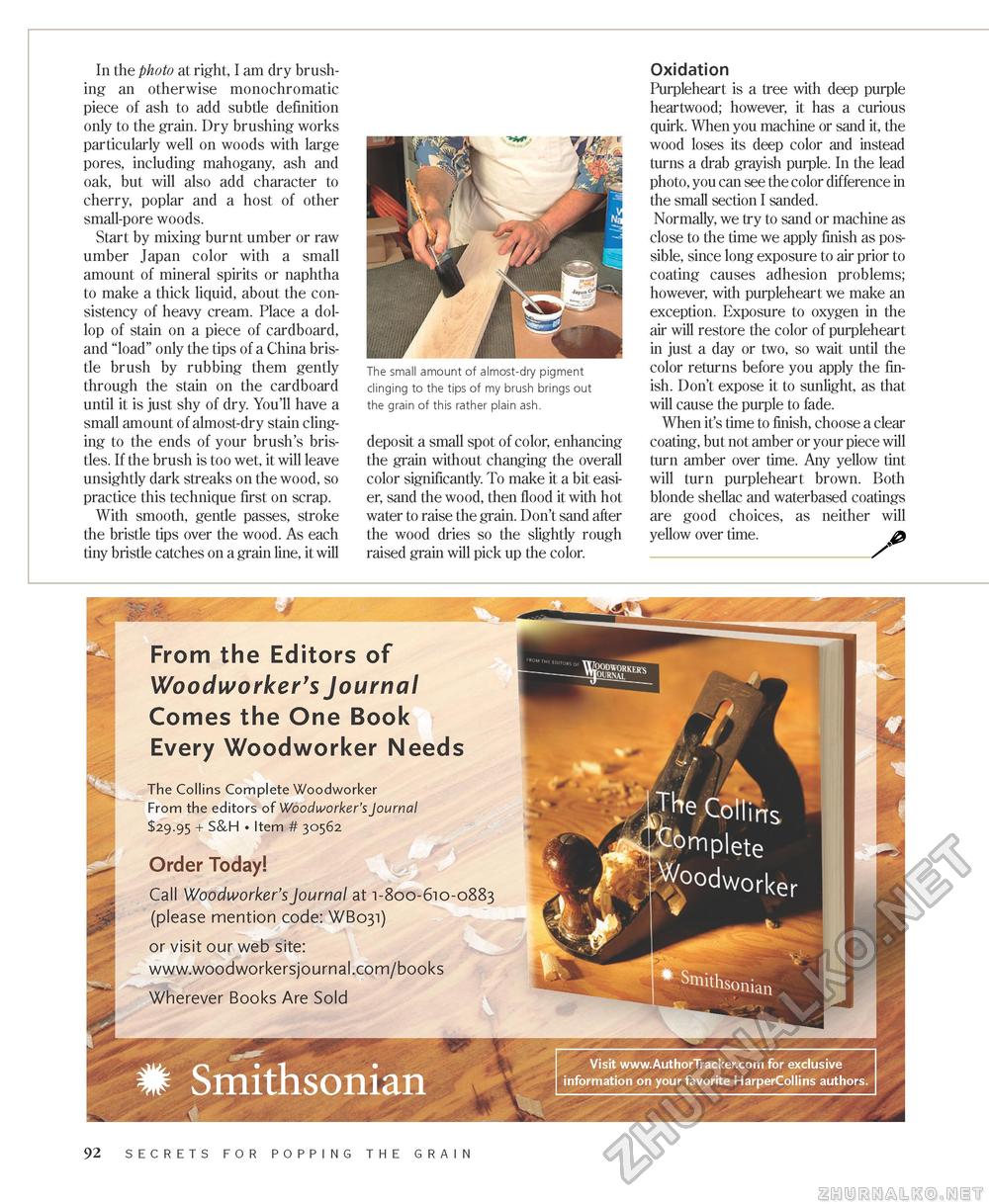Woodworker's Journal Summer-2008, страница 92
In the photo at right, I am dry brushing an otherwise monochromatic piece of ash to add subtle definition only to the grain. Dry brushing works particularly well on woods with large pores, including mahogany, ash and oak, but will also add character to cherry, poplar and a host of other small-pore woods. Start by mixing burnt umber or raw umber Japan color with a small amount of mineral spirits or naphtha to make a thick liquid, about the consistency of heavy cream. Place a dollop of stain on a piece of cardboard, and "load" only the tips of a China bristle brush by rubbing them gently through the stain on the cardboard until it is just shy of dry. You'll have a small amount of almost-dry stain clinging to the ends of your brush's bristles. If the brush is too wet, it will leave unsightly dark streaks on the wood, so practice this technique first on scrap. With smooth, gentle passes, stroke the bristle tips over the wood. As each tiny bristle catches on a grain line, it will The small amount of almost-dry pigment clinging to the tips of my brush brings out the grain of this rather plain ash. deposit a small spot of color, enhancing the grain without changing the overall color significantly. To make it a bit easier, sand the wood, then flood it with hot water to raise the grain. Don't sand after the wood dries so the slightly rough raised grain will pick up the color. Oxidation Purpleheart is a tree with deep purple heartwood; however, it has a curious quirk. When you machine or sand it, the wood loses its deep color and instead turns a drab grayish purple. In the lead photo, you can see the color difference in the small section I sanded. Normally, we try to sand or machine as close to the time we apply finish as possible, since long exposure to air prior to coating causes adhesion problems; however, with purpleheart we make an exception. Exposure to oxygen in the air will restore the color of purpleheart in just a day or two, so wait until the color returns before you apply the finish. Don't expose it to sunlight, as that will cause the purple to fade. When it's time to finish, choose a clear coating, but not amber or your piece will turn amber over time. Any yellow tint will turn purpleheart brown. Both blonde shellac and waterbased coatings are good choices, as neither will yellow over time. £ From the Editors of Woodworker's Journal Comes the One Book Every Woodworker Needs The Collins Complete Woodworker From the editors of Woodworker's Journal $29.95 + S&H • Item # 30562 92 secrets for popping the grain |








